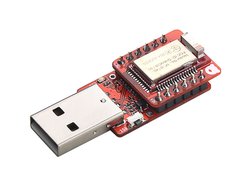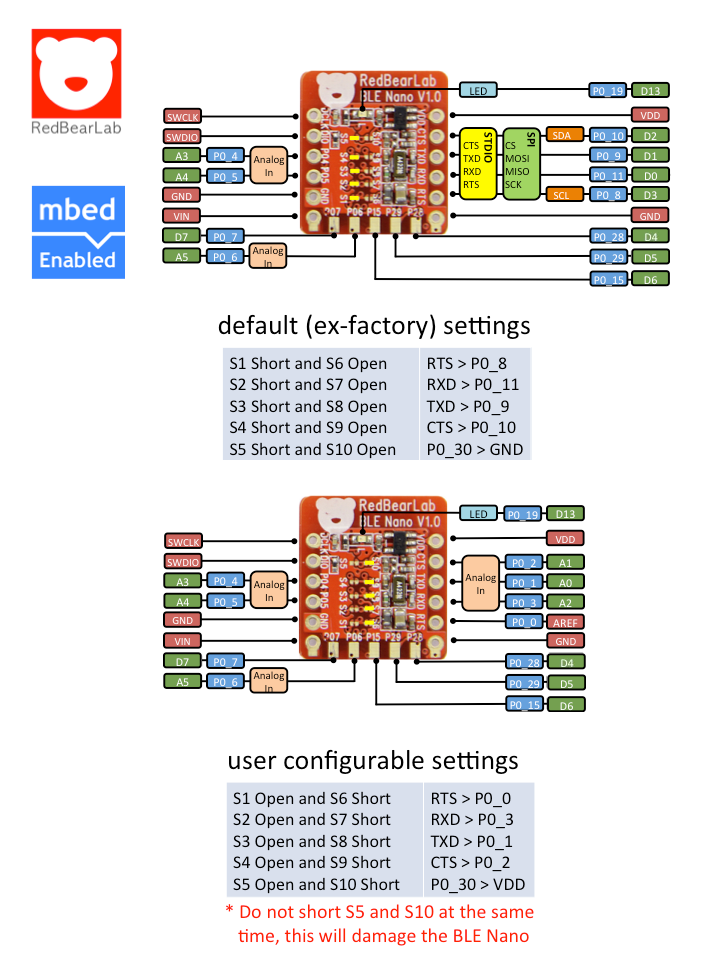RedBearLab BLE Nano
BLE Nano is the smallest Bluetooth 4.1 Low Energy (BLE) development board in the market. The core is Nordic nRF51822 (an ARM Cortex-M0 SoC plus BLE capability) running at 16MHz with ultra low power consumption. Developing a Bluetooth Smart enabled 'appcessory' (accessory device + companion application) is easier than ever. You can quickly produce protypes and demos target for Internet of Things (IoT) and other interesting projects. BLE Nano could operate under 1.8V or 3.3V, therefore it works with a lot of electronic components.

For more detailed information, kindly visit
BLE Nano product page.
Features¶
- Smallest BLE development board, only 18.5mm x 21.0mm
- Nordic nRF51822 SoC supports both BLE Central and BLE Peripheral roles
- Ultra low power ARM Cortex-M0 Core
- Support voltage from 1.8V to 3.3V
- 16MHz, 256KB Flash, 16KB RAM
- SWD Interface for nRF51822
- Debugging with offline IDE (e.g. Keil) using J-Link
- Burn firmware using J-Link
- External 32.768 KHz crystal
- Lower power consumption (reduce 10uA compare to using internal crystal)
- Required for RTC
- Support Device Firmware Update (DFU) Over-the-Air via BLE
- RedBearLab will provide DFU support for Windows & OS X
- Freescale MK20 companion MCU
- SWD Interface for MK20
- mbed HDK & SDK enabled
- Drag-n-drop programming
- USB Serial Port
- CMSIS-DAP
- Online development tools
- Easy to use C/C++ SDK
- Lots of published libraries and projects
Pinout¶

USB Interface Board¶
We have 2 models of USB interfacing board designed for BLE Nano, DAPLink (new) and MK20 USB (old).
We suggest that you use our DAPLink board as it supports the latest DAPLink firmware by mbed which supersedes the older CMSIS-DAP interface firmware.
You could find the latest firmware and technical details of our interface boards on our GitHub page below. https://github.com/redbear/nRF5x/tree/master/USB-IF
Out of box¶
You can test your BLE Nano kit following the steps below:
1. Mount your BLE Nano onto our DAPLink or MK20 USB dongle correctly.
2. Connect the DAPLink/MK20 USB dongle to your host PC. The PC will prompt that a new disk named "MBED".
3. Open the MBED disk. Drag and drop the below firmware to the disk:
4. You will see the LED on the BLE Nano starts blinking.


